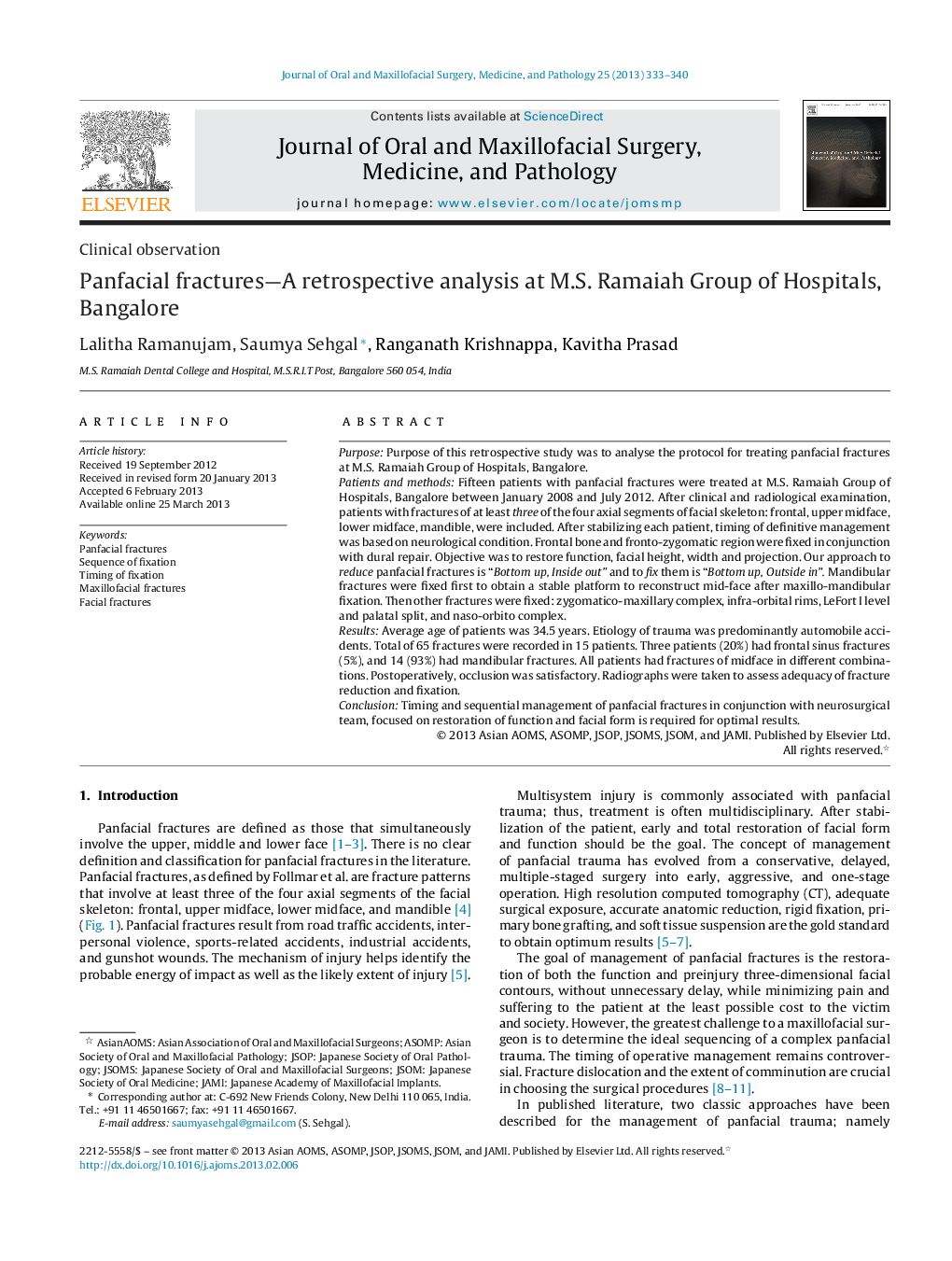| Article ID | Journal | Published Year | Pages | File Type |
|---|---|---|---|---|
| 3159880 | Journal of Oral and Maxillofacial Surgery, Medicine, and Pathology | 2013 | 8 Pages |
PurposePurpose of this retrospective study was to analyse the protocol for treating panfacial fractures at M.S. Ramaiah Group of Hospitals, Bangalore.Patients and methodsFifteen patients with panfacial fractures were treated at M.S. Ramaiah Group of Hospitals, Bangalore between January 2008 and July 2012. After clinical and radiological examination, patients with fractures of at least three of the four axial segments of facial skeleton: frontal, upper midface, lower midface, mandible, were included. After stabilizing each patient, timing of definitive management was based on neurological condition. Frontal bone and fronto-zygomatic region were fixed in conjunction with dural repair. Objective was to restore function, facial height, width and projection. Our approach to reduce panfacial fractures is “Bottom up, Inside out” and to fix them is “Bottom up, Outside in”. Mandibular fractures were fixed first to obtain a stable platform to reconstruct mid-face after maxillo-mandibular fixation. Then other fractures were fixed: zygomatico-maxillary complex, infra-orbital rims, LeFort I level and palatal split, and naso-orbito complex.ResultsAverage age of patients was 34.5 years. Etiology of trauma was predominantly automobile accidents. Total of 65 fractures were recorded in 15 patients. Three patients (20%) had frontal sinus fractures (5%), and 14 (93%) had mandibular fractures. All patients had fractures of midface in different combinations. Postoperatively, occlusion was satisfactory. Radiographs were taken to assess adequacy of fracture reduction and fixation.ConclusionTiming and sequential management of panfacial fractures in conjunction with neurosurgical team, focused on restoration of function and facial form is required for optimal results.
